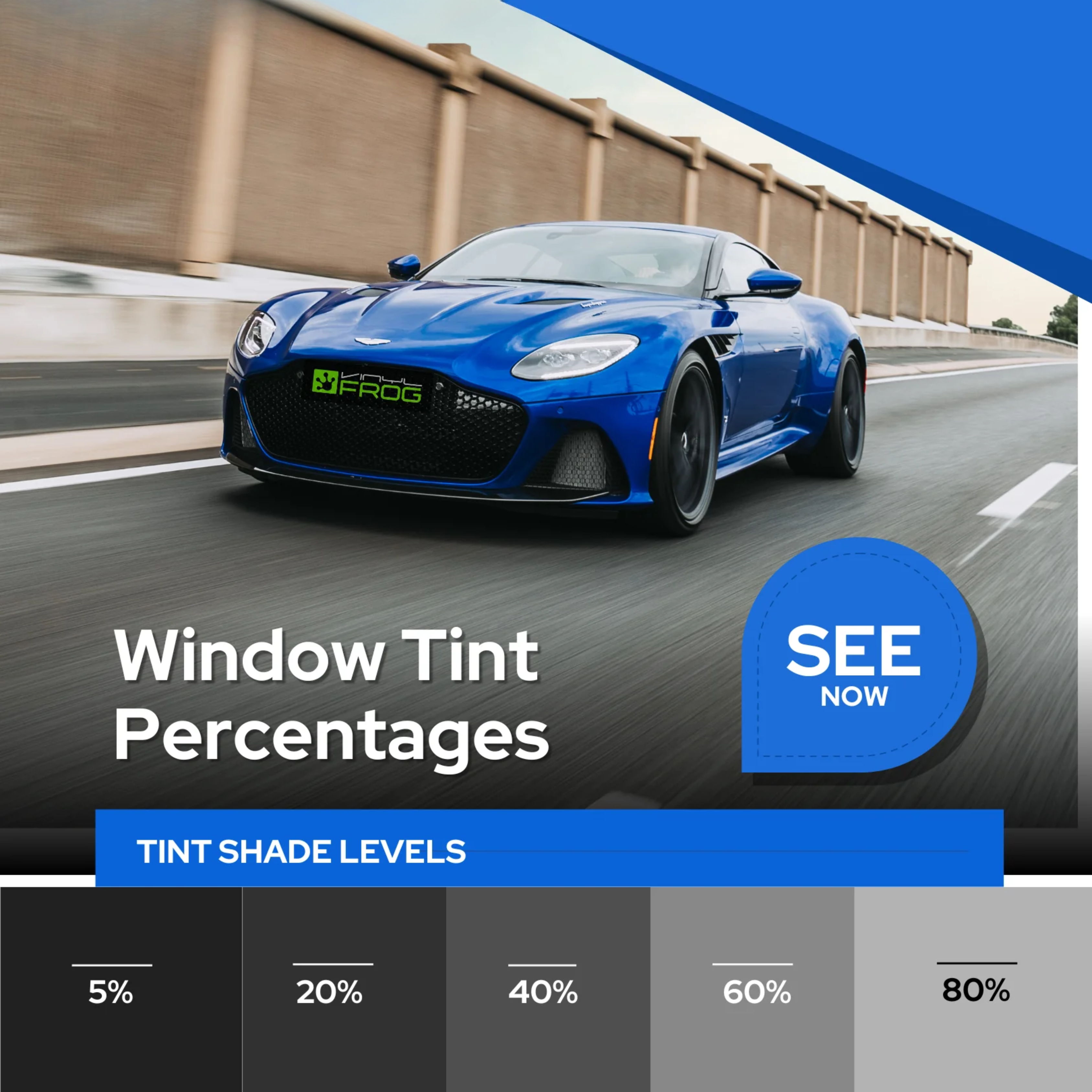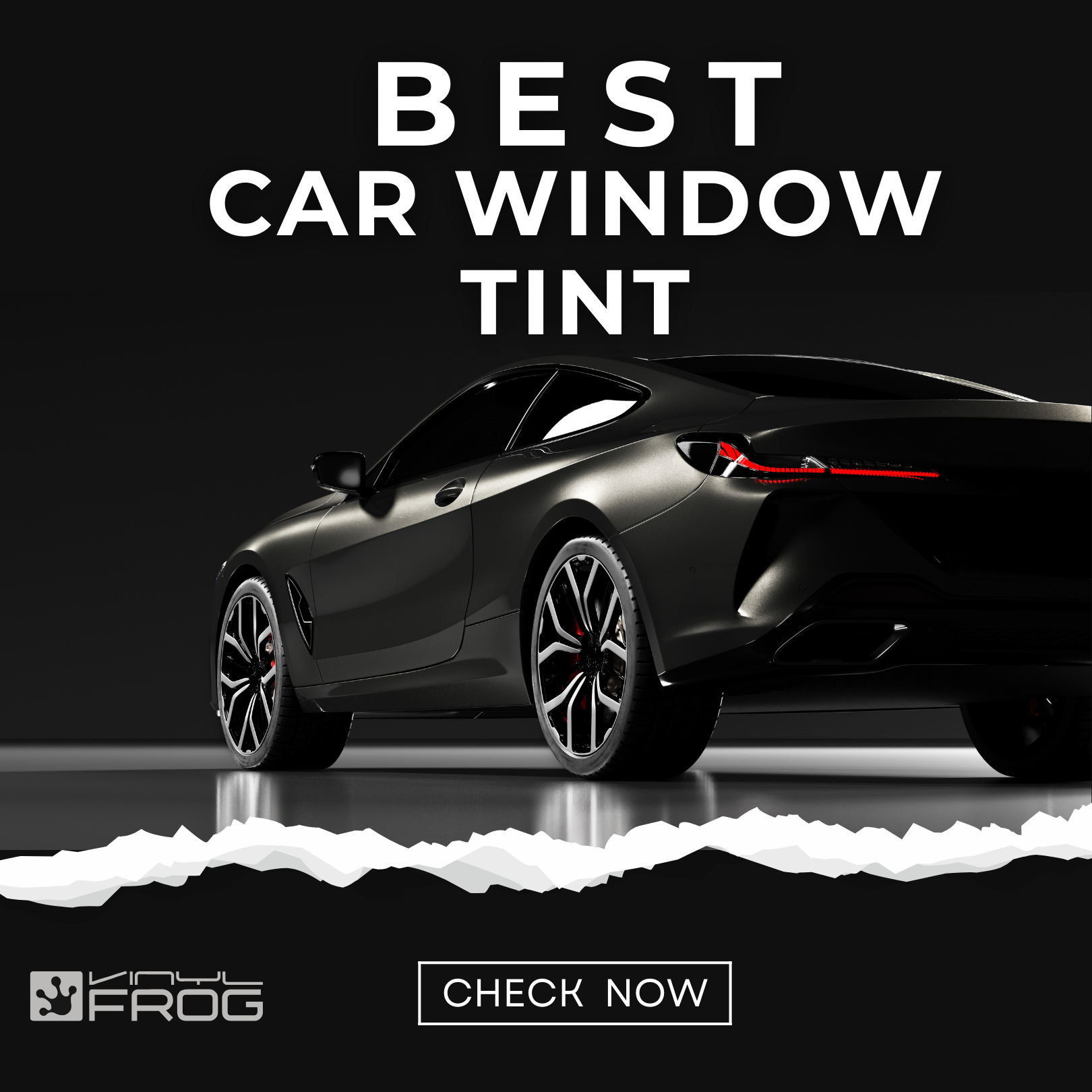Updated By Vinyl Frog On April 22, 2025
Colorado Tint Laws

If you live in Colorado and want to get the windows of your vehicle tinted, it is important to know and abide by the laws of the state. For those who love to go for drives or whose daily commute requires long hours in the sun, protection from the UV rays and heat is necessary. There is no better way to do this than to apply window tints to your vehicle. And the most important concern is the level of tint darkness that is allowed in the state?
Whether you are getting the tint for aesthetics or protection, the degree of transparency for windows must comply with regulations in Colorado. Read on to learn everything about Colorado tint laws and why it makes sense to have your car's windows tinted.
VLT Interpretation In Colorado Tint Laws
The state of Colorado allows a captivating transformation through window tinting but the interplay of light and darkness is governed by the guiding principle of Visible Light Transmission (VLT). This principle adds an enchanting allure to your vehicle, depending on the percentage of visible light allowed through your car windows.

VLT is a tool that measures the transmission of light through tinted glass. A lens with VLT of 10% allows 10% of light to enter while obscuring the other 90% for a stealth effect. The artistic possibilities are endless and up to the individual's personal style.
The opportunity is there for you to choose the intensity of tint that suits your personal taste, within the limits set out by the allowable VLT range. If you are considering adding a tint to your car windows in Colorado, it is crucial to keep the VLT regulations in mind to avoid any legal problems and guarantee a smooth ride.
Legality Of Window Tint In Colorado
As far as they follow the laws of the region, window tinting is a widespread practice among drivers in Colorado. In adherence to Colorado's regulations on tint, it is required that both the front and rear side windows of all automobiles permit a degree of external light to penetrate them.
Mentioned below are the rules for the different windows of a vehicle may it be a sedan, SUV or a van:
Front Windshield
It is important to have ample visibility through a vehicle’s front windshield, hence only 70% VLT tint is allowed on the top 4 inches. This is the AS-1 line on your car’s windshield. Below it, the glass of the windshield should be completely clear. The four inches of tinting at the top of the glass does not reduce visibility. In fact it helps prevent glare from the sun and other bright lights without inhibiting the driver’s vision.
Front Side Windows
The front windows that are one the left and right of the driver must have a VLT of over 27%. If the front side windows have over 70 percent VLT, the rear side windows as well as the rear window may be tinted to any degree.
Rear Side Windows And Rear Windshield
The rear side windows of the vehicle and the rear windshield must have a VLT of over 27%.
To adhere to Colorado's regulations, it is advisable that you observe the prescribed rules when getting your vehicle's windows tinted. This compliance will not only ensure that you abide by the law but will also give you the perks of window tinting which include shielding you from heat and glare, safeguarding your car's interior, and adding a chic flair to your vehicle.
Compliance Of Reflectivity With Colorado Tint Laws
The regulations concerning window tinting in Colorado extend beyond the level of tint darkness. The quantity of reflected light produced by the tint is just as crucial when it pertains to screening your car window in Colorado as the level of shade intensity.
Projection from window tint is important for maintaining visibility and preventing disruptions for drivers and other travelers. Colorado upholds laws that keep the reflecting properties of tinted windows at appropriate levels. According to the prominent reflection laws:

- Non-reflective window tint is allowed on the top four inches of the windshield.
- The laws in Colorado forbid the use of metallic or specular window tints on any window of the vehicle.
The purpose of this is to prevent any obstruction or distraction to the visibility from inside and outside the vehicle. By following the rules, you can pick out window tints that make your car look better and obey the law. Experts who know about Colorado's tinting restrictions can help you choose the right tint that meets reflection standards.
Other Regulations For Window Tint In Colorado
The art of window tinting is frequently preferred by vehicle owners for multiple purposes, ranging from boosting confidentiality to curbing glare and warmth within the vehicle. It is fundamental for residents of Colorado to be cognizant of the window tinting regulations to obey the law.
Colorado has imposed certain directives that dictate the darkness of the window tint, and other interconnected components. It's crucial to be aware of the other rules when thinking about tinting the vehicle’s windows in Colorado. These are:

- There is a requirement for dual side mirrors if the rear windows are tinted.
- Red and amber tint colors are prohibited by state law.
- State legislation recommends stickers to indicate authorized tinting but it is not obligatory. It is good to have these however, in case the police pulls you over for suspected window tint violations.
- In Colorado, film manufacturers are not required to certify the window tint they are selling.
- Colorado does not recognize medical exemption for window tint laws. If you have a health issue and you are carrying a certificate that allows you a darker tint than the legislation specifies, it is useless in this state. You will be fined nonetheless.
Since the well-being of drivers is an important issue, Colorado has strong laws governing the screening of automobile windows. To reap the rewards from window tinting's advantages, such as radiation and heat cuts, internal safety, and a beautiful commute, compliance with these laws is essential.
Exceptions In Colorado’s Tint Laws
Unfortunately, there are no exceptions in Colorado’s window tint laws. According to it, all windows, even those on both the front and back end of the vehicle, must possess a VLT of at least 27%. Backside windows may receive any degree of tinting if the front ones have a VLT of over 70 percent. The windshield can only have tint on the top 4 inches.
It's crucial to remember that these rules don't have any exclusions even for medical purposes. If you decide to apply tint to the windows of your vehicle in Colorado, you are bound to follow these regulations to prevent legal snags.
Penalties For Breaking Colorado's Window Tint Laws
Individuals who violate Colorado's tinting rules face repercussions. The regulations carry a typical charge of a Class B traffic violation. The amount that must be paid depends on how serious the offense was. It ought to be pointed out that Colorado's window tint laws carry a range of penalties, from a monetary fine of $100 with legal fees to a serious misdemeanor carrying a $5,000 fine.
The Colorado window tinting regulation states that when using a tint, one must additionally consider the permissible window projection. It is important to understand that a class B traffic offense carries a smaller penalty than a class A offense and is an administrative issue rather than a criminal one; therefore, there is no prospect of going to jail. The regulations set in place for car window tinting in Colorado may appear a bit harsh, but their goal is to guarantee the safety of individuals operating and occupying vehicles.
Range Of Window Tinting Choices
Diverse types of car window tinting are available, each with distinct advantages and downsides. The following are some examples of the most prevalent categories of window tints:
- Dyed tint is the most used and affordable type which uses layers of dyed film to absorb sunlight.
- Metalized tint is more expensive than dyed but provides better heat reduction and durability due to multiple layers of adhesive, polyester film, and metallic particles.
- Hybrid tint combines dyes and metal particles for reducing the negative aspects of both these tints.
- Carbon tint contains carbon particles and offers better heat reduction and durability.
- Ceramic tint contains ceramic particles and is the most expensive but also provides the best heat reduction and durability.
- Crystalline tinting is clear, blocks UV rays and reduces heat without darkening the windows, making it the most expensive but offering the best clarity and protection.
Every variety of window tint possesses its own special qualities, thus selecting the ideal one that meets your requirements as well as fiscal constraints is of utmost significance. You can find a window tint that caters to your demands regarding elegance, heat decrease, or safeguarding against UV rays in the legal VLT limit.
Frequently Asked Questions
Texas Window Tint Laws - Final Words
After reading this, you can explore the world of vehicle window tinting in Colorado with a focus on opacity limitations and legal reflection levels. Select the perfect tinting level to enhance your driving experience based on the concept of Visible Light Transmission (VLT). Understand potential penalties for non-compliance and explore a variety of tinting options.
Window tinting is a stylish and secure way to protect against UV rays and add a touch of luxury to your ride. For premium quality, durable window tint films, visit Vinyl Frog. Select the permissible tint percentage and transform your ride!














